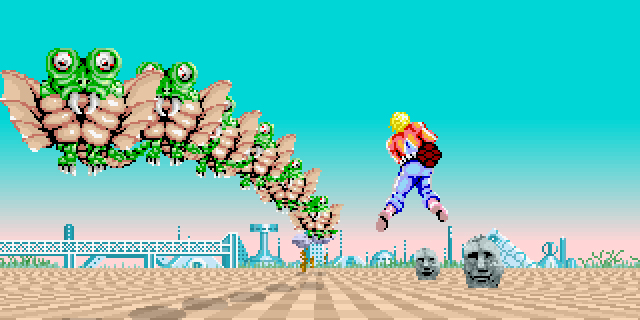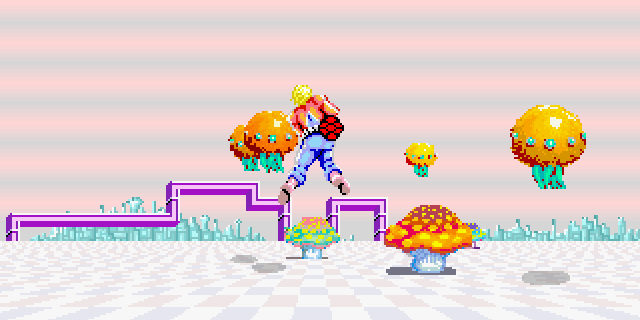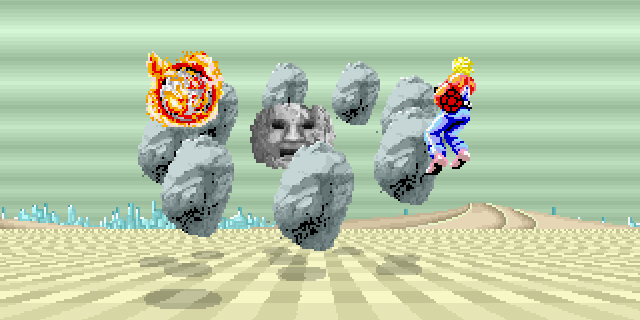
You may find it strange that I decided to write about Space Harrier, one of Yu Suzuki’s most well-known games. It does, after all, see no shortage of praise. Its theme song is chanted at every game concert, and it’s one of the few games on display at the Smithsonian. It’s not an obscure game, and while we may never see a home release of its arcade sequel, it certainly hasn’t been forgotten. So why write about it?
Space Harrier is a deceptively simple game. It’s easy to just see it as just a game in which you press the button and things die, but Suzuki is a very conscious designer. He has a very specific vision behind each of his games, and nothing in them is ever left to chance. He did make Shenmue, after all.
There seem to be no random elements in Space Harrier. The enemy patterns are fixed, as are trees and other obstacles. The space given to maneuver is incredibly precise, and the movement of the joystick corresponds perfectly with the character. Trees and other obstacles don’t lead into each other. It’s a seamless design, which couldn’t have been easy to do.

It’s an easy game to take for granted, and you normally do until you play some of Space Harrier’s clones. Then it strikes you, often quite literally: there’s a certain rhythm that a game of this kind must have. The game must keep you moving to compensate for the combination of hitbox and crosshair, and it’s easy to get trapped between enemies. Everything must have been built from the ground up with flow in mind, and then polished for countless hours.
Take the bouncing mushrooms, for example. They come in by the dozens, drawing a spiral-like pattern with their movement that you can immediately grasp even at Space Harrier‘s breakneck speed. They promote movement, allowing the designer to interweave them with different kinds of enemies. Being cyclical, they introduce fairness, letting the player know what to expect. However, their complex patterns and speed towards the player is constantly changing, making them harder and more interesting than the simplistic linear patterns. More importantly than that, they’re fun.
It’s an idea that has been explored in other games — the most well-known example might be the flying Medusa heads of Castlevania — but Space Harrier is a game completely dedicated to this concept. It succeeds by communicating those movements to the player better than anyone else.

Using a controller is fine, but it misses the greatness of the experience. Space Harrier is meant to be played with a joystick. Using a joystick immediately ties you to the experience. Your movement in real life mirrors that of the game, and it allows you to get deeper into it. Suzuki understood it as a vital part of the experience, which is not surprising from the designer of Hang-On. Full-body movement means full-body immersion here.
Don’t just sit there reading! The conical curves and crisscrossing patterns of this game aren’t meant to be enjoyed in theory; they are to be experienced in person. Otherwise, it’s like explaining a kiss instead of being kissed. So grab a joystick and find a good port of the arcade game. It’s really worth it!



















